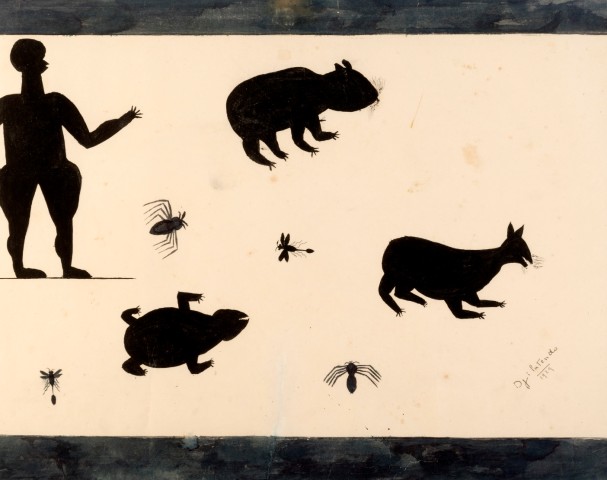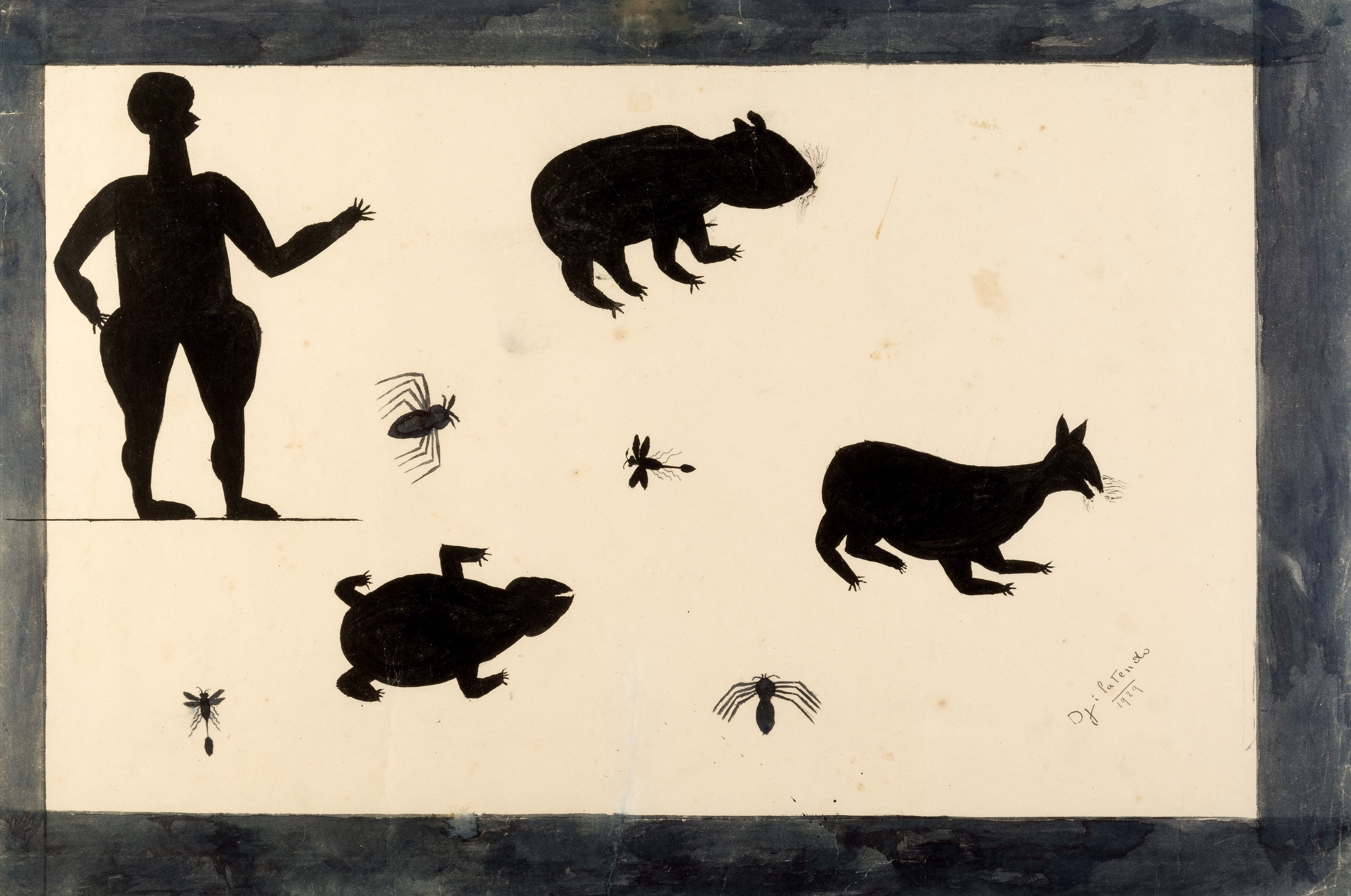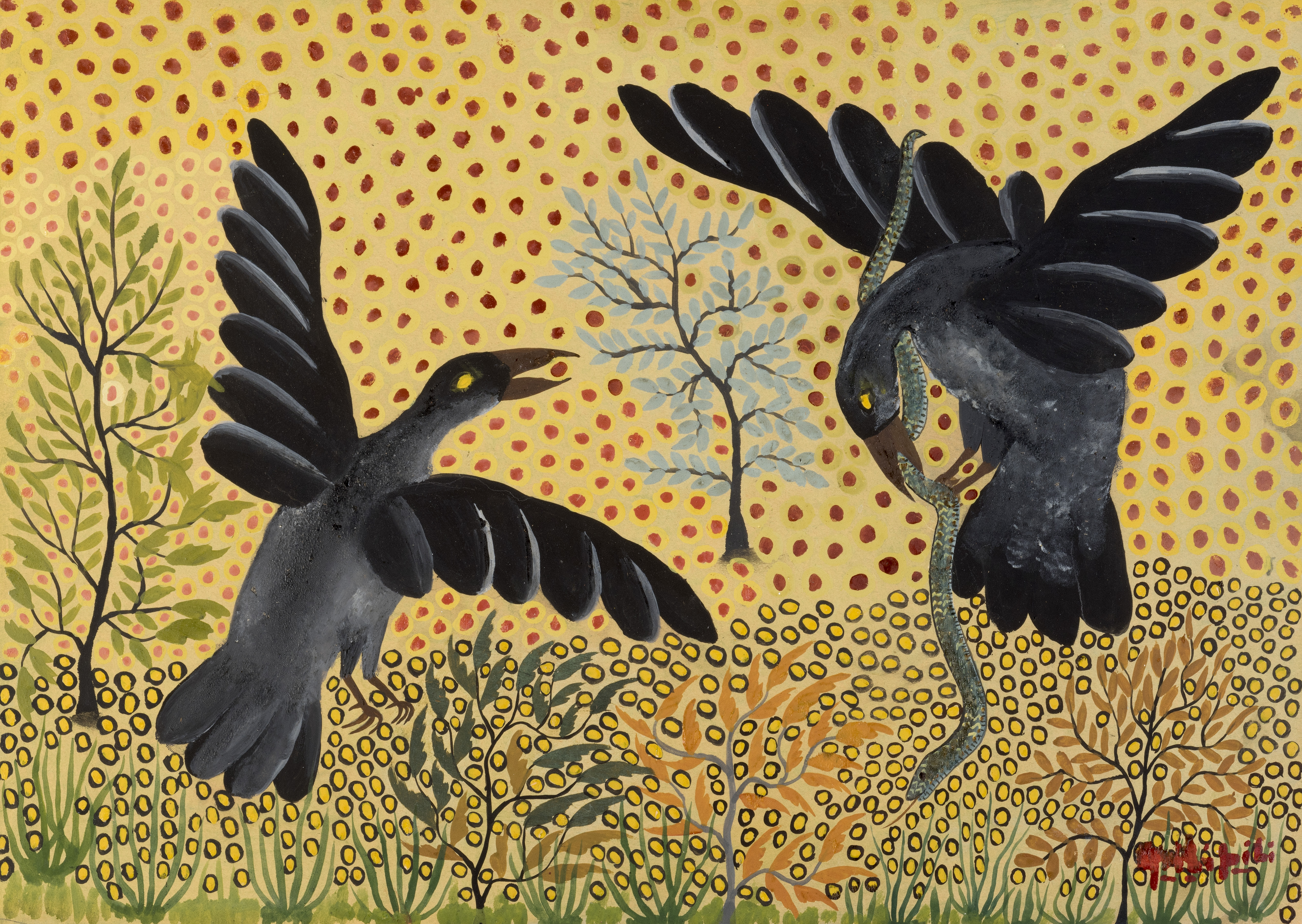The beginning of the Congolese painting modern period goes back up in the 1920’s. This is when Georges Thiry, Belgian colonial state employee, was surprised by the artistic quality of the decorations which adorn the walls of some huts. Worried about their durability, he decides to supply the authors, Djilatendo and the couple Albert and Antoinette Lubaki, with colors and paper. Thanks to him, this short-lived art reproduced with watercolor can travel. In 1929, Thiry, with the help of his superior Gaston-Denys Périer, exhibit Lubaki in Brussels on the occasion of the Fine Arts Palace inauguration. Other exhibitions will follow, at Geneva Ethnography Museum and then in some Parisian galleries.
Thiry met Djilatengo when he was a tailor and the wall of his hut were covered with paintings, that get Thiry’s attention. Djilantendo is a contemporary artist of his time, abstract and figurative, he draws his inspiration from his environment. Either it declines in faded colors the Kasaï carpet patterns, or he represents in black or purple ink shadows characters or animals.
Lot 600 - Djilatendo (1895 - 1950)
Untitled, 1929
Result: 54 600 €
In 1935, Georges Thiry and Gaston-Denys Perier fall out, and stop sending colors and paper to the artists, which will probably mark the end of their production. Under colonial rule, the character in baggy trousers drawn on the paper might suggest the officer exercising control over the creation beings, persuaded that he has, the authority to indicate the path to the animals.
Pilipili is the son of a fisherman who works as a painter and plumber in Public Works when he meets Romain-Desfossés who will integrate him in the Hangar after 1947. He will be one of the most talented artists. If he sometimes applies a decorative style with strong serial and repetitive patterns, the Pilipili's drawings testify mainly of the Nature abundance.
Lot 607 - Pilipili Mulongoy (1914-2007)
Untitled
Result: 10 400 €
It seems twinkle under fine touches of bright colors, meticulously applied under shapes of lines, dots and circles that eventually invade the whole space. At the death of Romain-Desfossés, Pilipili will join the Lubumbashi Academy of Fine Arts as a teacher and will teach notably the famous artist Mode Muntu.



